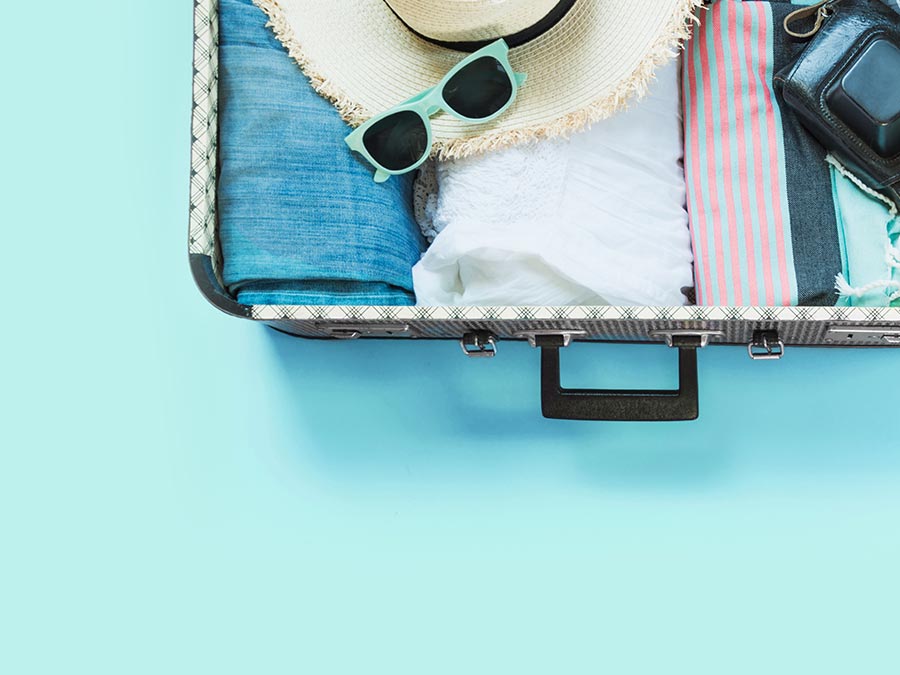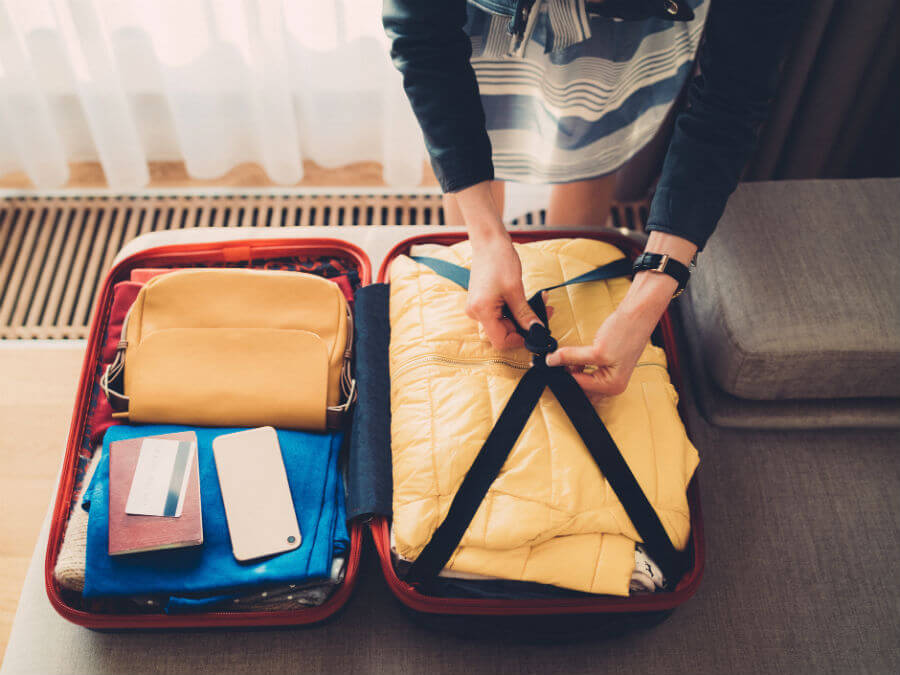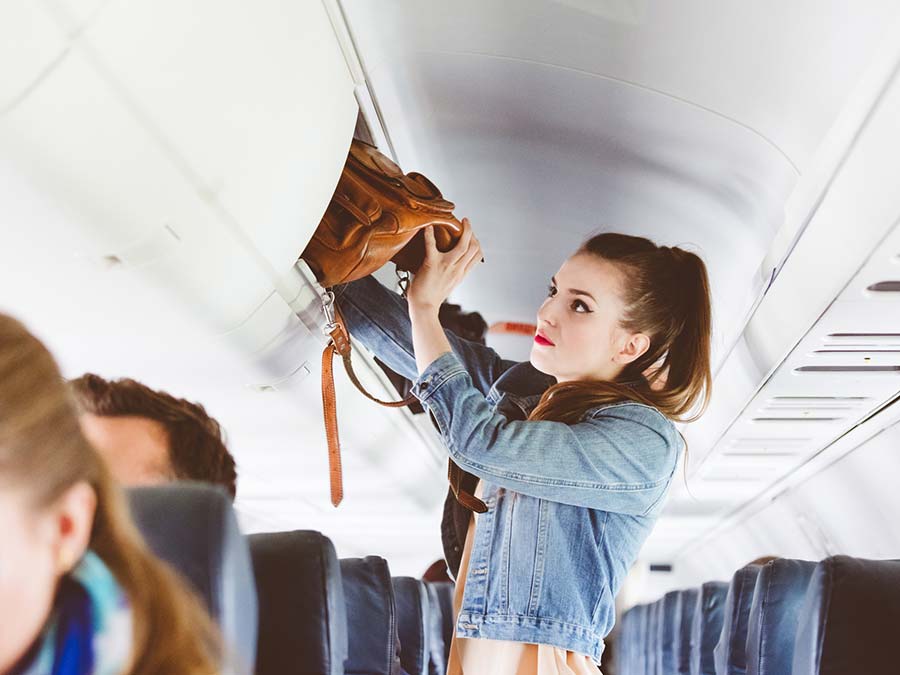
Guide to cabin luggage
A cannonball, a questionably-shaped iPhone case, and live pigeons stuffed down the pants - travellers have attempted to take some strange and silly items in their carry-on luggage. These might be obvious no-no’s, but what about everyday items like medication, electronics and toiletries?
The truth is, carry-on luggage restrictions can be confusing. Which is why we’ve put together a handy guide on what you can and can’t take on-board, some common mistakes to avoid, and a few packing tips for your next trip.
What size is cabin baggage?
The first thing to do when thinking about packing your cabin baggage, is to check the size limits. The standard measurements for a carry-on bag are approximately 56cm + 36cm +23cm, however, these measurements vary depending on the airline. We recommend visiting your airlines website directly, before you start packing, to find out what the specific cabin baggage sizes are.
What can you take on a plane?
What you can and can’t take on a plane can vary depending on where you’re flying to and from. For domestic flights within Australia there aren’t any restrictions on the amount of powders, aerosols and liquids you can take onboard. However, if you are travelling out of an international terminal or on an international flight there are limits on these items. For examples of these types of powders and liquids visit the Australian Border Force site.
What can’t you take on a plane?
There are a plethora of weird and wacky items that get confiscated from border control all over the world. Some of these items seem like obvious no-no’s (think; cats, samurai swords and throwing knives) but even everyday items can attract unwanted attention from airport security. Below are the most common restricted items on a plane:
Toiletries
- Liquids
- Aerosols
- Creams
- Pastes/lotions
- Oils
- Perfumes
- Mascara
- Lip gloss
- Solutions
- Sprays
- Gels
- Scissors
For liquids, gels, pastes and aerosols, these can be taken on board if they are within the carry-on liquid restrictions of 100ml or less and fit into a transparent, sealable plastic bag – often provided at airport security.
Food and drink
- Drinks (water, juice, coffee, tea etc.)
- Spreads (Jam, honey, syrup, soft cheese)
- Liquid foods (yogurt, soup, sauce, oil, vinegar)
Tools and equipment
- Corkscrews
- Knives with sharp or fixed blades
- Cutters
- Printer cartridges
- Sporting equipment like bats, clubs, sticks, skates, rods, javelins, paddles etc.
- Tent pegs
- More than one cigarette lighter (which needs to be kept on your person at all times)
Medication in carry-on luggage
Most airlines encourage you to pack prescription medication in carry-on luggage, in case it's required during your flight, or if you’re separated from your checked luggage on arrival. However, like liquids, there are some tight controls on how much you can take and how it should be packed.
Generally, all medication should be kept in its original packaging, with a certificate from your doctor stating your condition and the medication you require. Liquid medications (like syrups) should be included in your separate liquids bag. The exact limit of medication you can take is up to the discretion of airport security officers, but it’s recommended you take a reasonable supply that will last should you lose your luggage.
If you require more than 100ml of liquid medications, it’s recommended that you notify the airline or airport in advance and seek advice.
Carry-on luggage: dos and don’ts
Let’s take a look at a few simple and practical dos and don’ts when packing your bags.
Do: check with your airline
Confused about whether your moisturiser is permitted on-board? Or whether your backpack is too big for the overhead compartment? Your carrier’s website should be the first place you look when searching for up-to-date information on prohibited items and baggage size limits.
Don’t: try to beat them
Understandably, airport security officers take their job very seriously. You might think that a cigarette lighter in your on-board luggage is no big deal, but chances are they'll think otherwise. Avoid the unnecessary stress by always observing cabin baggage rules.
Do: pack your electronics
Not only will they help you through those long-haul journeys, but packing your electronics in carry-on luggage also ensures they are covered by your insurance if they’re lost, stolen or damaged.
Don’t: bury sensitive items at the bottom of your bag
Items like liquids, gels and electronics will need to be scanned at security checkpoints. Save time and stress at the security line by keeping these sensitive items at the top of your bag, where they can be easily accessed. Gels, pastes, aerosols, liquids and creams should be packed in a separate transparent bag for screening, and never exceed 100ml each.
FAQs
Can you bring alcohol on a domestic flight?
Alcohol is allowed on most flights as long as it is being carried unopened in the original packaging and does not have a volume of 70% or over. But, this varies depending on the airline you are travelling with, therefore we would recommend visiting the airline’s site for more information.
Can you bring a razor on a plane in Australia?
Razors are commonly prohibited from carry-on luggage, therefore they should be kept in your checked in baggage only.
Is there a liquid limit on domestic flights?
If you are travelling on a domestic flight in Australia, there are not specific limits on how much liquid you can carry on board, visit the TravelSECURE site for more information.
Can you take perfume on a plane?
Perfume can usually be brought on board in carry-on luggage as long as it is no more than 100ml and is placed in a sealable bag for airport security.
If you have questions about how your luggage is insured, check out our range of policies, or get in touch with us at info@scti.com.au.
The content of this article is general and provided for information purposes only. Southern Cross Travel Insurance (SCTI) doesn’t guarantee or warrant the accuracy, completeness or currency of any article.
This article may contain hyperlinks to other websites owned or operated by third parties, or references to third party products or services. SCTI isn’t responsible for, and makes no recommendation about, the content or accuracy of any third party website, or for the suitability or performance of any product or service. The inclusion of a link in this article doesn’t imply that SCTI endorses the website or third party product/service.





